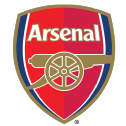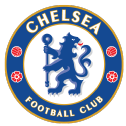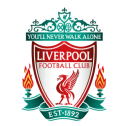The January transfer window might feel as if it has always been a fixture in the Premier League calendar, but in fact it first came into operation in the 2002-03 season.
Before the two-window transfer system as we know it today, top-flight clubs were allowed to trade players throughout the season up until March 31, after which point it was deemed that signing reinforcements could potentially undermine the integrity of the run-in.
The two-window system was devised by FIFA as a method of restricting players from merely moving clubs at will while still allowing them to be traded during set prescribed periods — i.e., the summer and winter windows.
Arsenal, Chelsea, Liverpool, Manchester City, Manchester United and Tottenham Hotspur have all endured mixed fortunes when it comes to the winter market. Among them, the Premier League’s Big Six have completed close to 200 signings for their first-team squads during January since 2003. Chelsea and Tottenham have been the most active in that time, with 39 and 40 signings, respectively. Meanwhile, Manchester United — perhaps somewhat surprisingly — have conducted the least amount of business, with just 22 deals struck in total.
Together the Big Six have spent over £1.83 billion in the winter window to date, with Chelsea the biggest spenders by a huge margin (£628.94 million) and Manchester United the most frugal (£179.65m) overall. Chelsea have also made the most signings during a single winter window, having brought in eight new players (for a total fee of £296.7m) in January 2023.
We’ve sifted through every incoming first-team transfer (including all permanent deals, loans and free transfers) made in January by each of the Premier League’s biggest clubs over the past two decades and selected the three best and three worst for each club.
– Stream on ESPN+: LaLiga, Bundesliga, more (U.S.)
1:34
Why Havertz could be the solution to Arsenal’s centre forward problem
Gab and Juls discuss why they think Kai Havertz can make an impact in the forward line for Arsenal.

Arsenal
BEST
1. Martin Ødegaard (signed from Real Madrid, loan), Jan. 27, 2021
Having joined Real Madrid as a 16-year-old prodigy in 2015 only to get a handful of games there in between a series of loan spells, Ødegaard made a speculative six-month move to Arsenal in search of a fresh start at the age of 22. The Norway midfielder was an instant hit and soon recaptured his creative zeal, quickly becoming a fixture in the Gunners’ midfield before making his transfer permanent for around £40m the next summer. He is now club captain, so it’s fair to say it worked out.
2. Theo Walcott (Southampton, £5m), Jan. 20, 2006
Signed by Arsene Wenger just six months after breaking into the Southampton first team as a prodigious, fleet-footed 16-year-old winger, Walcott spent the next 12½ years of his career at Arsenal, scoring 108 goals in just under 400 games and winning three FA Cups. Not bad for £5m.
3. Pierre-Emerick Aubameyang (Borussia Dortmund, £56m), Jan. 31, 2018
A club-record signing at the time, Aubameyang soon repaid the faith with 10 goals in 13 games in his first half-season. The charismatic striker then followed up by sharing the Premier League Golden Boot in his first full campaign (2018-19) before captaining the side to victory in the 2019-20 FA Cup final, scoring twice against Chelsea. He ultimately left in February 2022 after disciplinary issues soured his relationship with manager Mikel Arteta, but at least he did so after scoring an impressive 92 goals in 163 games for the club.
WORST
1. Kim Kallstrom (Spartak Moscow, loan), Jan. 31, 2014
Kallstrom joined Arsenal on a six-month loan from Spartak on deadline day, only for it to be quickly revealed that the Sweden international was struggling with a troublesome back injury. As such, the midfielder mustered just four appearances (totalling 135 minutes) before returning to Russia. He did at least form part of the Gunners’ 2019-20 FA Cup-winning squad, scoring a crucial penalty in their semifinal shootout victory over Wigan.
2. Denis Suárez (Barcelona, loan), Jan. 31, 2019
After struggling to find games at Barcelona, Suárez signed for Arsenal on loan for the latter portion of the 2018-19 season. Unfortunately a pesky groin injury left the Spain midfielder short on form and fitness, and he ultimately returned to Camp Nou having played just 67 minutes of Premier League football split across four rather forgettable substitute outings.
3. Thomas Eisfeld (Borussia Dortmund, £420k), Jan. 31, 2012
Eisfeld arrived with a burgeoning reputation, having progressed quickly through Dortmund’s academy system, and the skilful attacking midfielder was even compared to Gunners legend Robert Pires in style. Alas, the German youngster didn’t flourish in quite the same manner as his French predecessor and eventually left in 2014, having made just two first-team appearances in the League Cup.
1:45
Don Hutchison lauds Cole Palmer’s ‘cockiness’ after 2-goal performance
Don Hutchison reflects on Cole Palmer’s two-goal performance in Chelsea’s 3-2 victory vs. Luton Town.

Chelsea
BEST
1. Olivier Giroud (Arsenal, £18m), Jan. 31, 2018
Giroud arrived from Chelsea’s rivals Arsenal on an initial 18-month deal at age 31. Dismissed by many as an underwhelming addition to the squad, the veteran France target man instead provided dependable attacking cover. He was also instrumental in the Blues’ 2018-19 Europa League triumph (finishing as top scorer in the competition with 11 goals, including one against former club Arsenal in the final) and also won the Champions League and the FA Cup during his 3½-year stint at Stamford Bridge.
2. Branislav Ivanovic (Lokomotiv Moscow, £9.7m) Jan. 16, 2008
An unfamiliar name when he arrived, Ivanovic quickly proved to be a versatile and dependable defensive presence for Chelsea under several different managers. The Serbia international spent 10 seasons at Stamford Bridge, playing 377 games and winning three Premier League titles, three FA Cups, the League Cup, the Europa League and the Champions League.
3. Nemanja Matic (Benfica, £21 million) Jan. 15, 2014
Matic returned to Chelsea in the 2014 January window having first left the club as part of the deal that saw David Luiz arrive at Stamford Bridge from Benfica three years previously. The Serbian defensive midfielder wasted little time bedding in under Jose Mourinho and played over 150 times across the following 3½ seasons while winning two Premier League titles, an FA Cup and a League Cup. He then joined Manchester United for a fee worth almost twice as much as Chelsea paid for him.
WORST
1. Fernando Torres (Liverpool, £50m), Jan. 31, 2011
Often heralded as one of the worst signings in Premier League history, we can’t help but feel that is a little unfair on Torres who, despite clearly failing to rekindle his mercurial Liverpool form, was hardly an unmitigated disaster for Chelsea. El Niño scored 45 goals in 172 games for the Blues and won both the Europa League and Champions League in the space of 3½ seasons — although that monumental £50m fee continued to haunt him throughout, and it’s hard to argue there are many worse January moves made by the club.
2. Alexandre Pato (Corinthians, loan) Jan. 29, 2016
Chelsea made one of many attempts to revive the flagging career of one-time Brazilian wonderkid Pato when they signed the striker on a six-month loan in January 2016. The 26-year-old scored a penalty on his debut in a 4-0 victory over Aston Villa — but that was about it. He duly returned to Corinthians at the end of the season having made just one further appearance for the Blues.
3. Juan Cuadrado (Fiorentina, £23.3m) Feb. 2, 2015
Chelsea signed Cuadrado for a relatively sizeable fee off the back of an impressive World Cup performance for Colombia the previous summer. It’s perhaps also worth noting that the transfer saw the Blues allow an out-of-favour winger by the name of Mohamed Salah to join Fiorentina as part of the deal. Cuadrado subsequently played 13 times for the Blues and failed to register a single goal or assist. By comparison, Salah is now one of the Premier League’s all-time leading goal scorers having ended up at Liverpool.
0:50
Ogden: Even Mbappé couldn’t replace Salah at Liverpool
Mark Ogden explains why he expects this to be the last season for Mohamed Salah at Liverpool.

Liverpool
BEST
1. Luis Suárez (Ajax, £22.7m) Jan. 31, 2011
Arguably the best January signing on record, Suarez got off to a decent start and just kept getting better for Liverpool, with his goal yield increasing year on year until 2013-14 when the Uruguayan left for Barcelona with 31 goals in 33 Premier League games. That tally was enough to win him the Premier League Player of the Season award, as well as the Golden Boot and the European Golden Shoe, among a clutch of other individual accolades.
2. Virgil van Dijk (Southampton, £75m), Jan. 1, 2018
He may have cost a lot but Liverpool signed not only an elegant, world-class centre-back, but also the perfect ball-playing defensive lynchpin for Jurgen Klopp’s all-action renaissance team. The Netherlands international is still at the heart of Klopp’s back line at the age of 32, now captaining a side that have won six major honours — including Champions League and Premier League titles — since his arrival.
3. Philippe Coutinho (Inter Milan, £8.5m), Jan. 30, 2013
Coutinho hit the finest form of his entire career at Liverpool, contributing to a devastating attacking unit alongside the likes of Mohamed Salah, Sadio Mané and Roberto Firmino. The sprightly Brazilian forward spent 5½ seasons at Anfield without winning a trophy but did provide 54 goals and 45 assists in 201 games before leaving for Barcelona in a gargantuan £120m transfer. It’s fair to say the forward, now on loan at Al-Duhail from Aston Villa, has been off the boil for most of the time ever since leaving Anfield.
WORST
1. Andy Carroll (Newcastle United, £35m), Jan. 31, 2011
Signed on same day as Suarez and for a much larger fee, Carroll provided stark contrast in terms of both style and fortunes. The 22-year-old inherited the No. 9 jersey freshly vacated by Fernando Torres but struggled to join the pantheon of great Reds’ strikers with a paltry four goals being his best season’s return over the course of his 58 games for the club. The wrong man at the wrong time.
2. Jan Kromkamp (Villarreal, swap deal), Jan. 12, 2006
Kromkamp came to Anfield as part of a swap deal that saw unsettled Spanish defender Josemi move to Villarreal. Although a relatively versatile Netherlands international, the full-back struggled for first-team involvement under Rafa Benitez (being cup-tied in European competition didn’t help) and spent most of his first six months at Anfield on the bench. He then managed one league appearance in 2006-07 before being allowed to join PSV Eindhoven.
3. Ozan Kabak (Schalke 04, loan), Feb. 1, 2021
Desperate for cover after a spate of defensive injuries, Liverpool parted with £1m to bring Kabak in on loan from Schalke for six months after managing to file the completed paperwork on deadline day — mere hours after the club spent £1.2m to sign centre-back Ben Davies from Championship side Preston. Unfortunately, both players failed to hold down a first-team place and managed just nine cumulative league appearances between them (Kabak accounting for all nine) before being moved on.
1:03
Guardiola reveals unique halftime team talk vs. Sheffield United
Pep Guardiola admits he didn’t speak about tactics for the first ever time during the break.

Manchester City
BEST
1. Edin Dzeko (Wolfsburg, £27m), Jan. 7, 2011
Dzeko had previously scored 66 goals in 111 games for Wolfsburg and helped propel the club to the 2008-09 Bundesliga title, the season in which he and strike partner Grafite rattled away an incredible 54 league goals between them. The Bosnia and Herzegovina international then became the ninth signing of Roberto Mancini’s City tenure and continued to chip in with regular goals, scoring 72 times in 189 games and playing his part in two Premier League title wins — including City’s landmark victory in 2011-12.
2. Gabriel Jesus (Palmeiras, £27m), Jan. 19, 2017
After City struck a deal for Gabriel Jesus in August 2016, it was agreed by all parties that the 19-year-old Brazilian forward would remain at Palmeiras for six months before switching to City in January 2017. The nimble forward then spent 5½ years at the Etihad where he regularly found himself deployed as back-up for Sergio Agüero. Still, he scored 95 goals in 236 games and won eight major titles with City before Arsenal signed him for £45m in summer 2022.
3. Julián Álvarez (River Plate, £14.1m), Jan. 31, 2022
One of the most coveted young attacking talents in Argentina, City initially agreed to allow Alvarez to remain at River Plate on loan until summer 2022. When he first landed at City, he deputised in a number of advanced positions before establishing himself as a regular starter and sealing both the 2022 World Cup and treble inside seven months.
WORST
1. Wilfried Bony (Swansea, £25m) Jan. 14, 2015
Bony was a sensation for Swansea in his debut season, scoring 25 goals in all competitions during the 2013-14 campaign. His prolific form continued with nine league goals in the first half of the 2014-15 which led to the Ivory Coast international landing a move to City. However, game time proved scarce and the arrival of Pep Guardiola as manager in 2016 brought a quiet conclusion to Bony’s involvement.
2. Nery Castillo (Shakhtar Donetsk, loan), Jan. 1, 2008
Castillo was Shakhtar’s record signing when he made the move from Olympiakos for €20m in summer 2007. However after failing to impress in Ukraine, the striker was offered a lifeline by Sven-Goran Eriksson in January 2008 and even paid half of his own fee to secure a one-year loan. The Mexico international then suffered a broken shoulder during his first month at City and all momentum vanished, eventually returning to Shakhtar a year later having made just nine appearances for the Premier League club.
3. Georgios Samaras (Heerenveen, £6m), Jan. 30, 2006
Making him the most expensive Greek footballer of all time, City paid £6m to pry Samaras from Dutch club Heerenveen at the tail end of the 2005-06 window. Unfortunately, he failed to adapt to English football and often looked clumsy while leading City’s line, scoring just eight goals in 54 league games before departing for Celtic (initially on loan) in January 2008.

Manchester United
BEST
1. Nemanja Vidic (Spartak Moscow, £7m), Jan. 5, 2006
After impressing in the Russian top flight, United were forced to fend off competition from rival clubs around Europe to sign Vidic in January 2006. The Serbia centre-back quickly became an icon at Old Trafford thanks to his willingness to lay his body on the line for the cause, and he became club captain in 2010. Arguably one of the best, and toughest, defenders to have played in the league.
2. Patrice Evra (Monaco, £5.5m), Jan. 10, 2006
Signed five days after Vidic, Evra similarly became a staple of the ultra-successful backline that underpinned United’s imperious run under Sir Alex Ferguson between the mid-2000s and early 2010s, winning five Premier League and the Champions League titles in that time. The athletic France left-back played 379 games for the Red Devils before leaving for Juventus in 2014-15.
3. Bruno Fernandes (Sporting Lisbon, £46.6m), Jan. 30, 2020
Pipping the likes of Louis Saha and Juan Mata onto this list, Fernandes has been one of few bright lights in United’s recent underwhelming history. The Portugal midfielder has scored 69 goals and laid on 59 assists in 208 games since moving from Sporting CP over 3½ years ago — comfortably more goal contributions than any other United player has mustered in that period. He also rarely misses a game, and being a fixture in the starting XI was not doubt a factor in the decision to make him club captain at the start of this season.
WORST
1. Alexis Sánchez (Arsenal, swap deal), Jan. 22, 2018
Despite seeing him dramatically dive out of form at Arsenal, Man United obviously believed they could coax Sanchez back to his effervescent best when they exchanged the winger for Henrikh Mkhitaryan in a rare straight-swap deal. Unfortunately it wasn’t to be as the Chile international floundered, misfired and wallowed his way to three league goals in 18 months for United before being loaned out to Inter Milan for the 2019-20 campaign, eventually joining them for nothing that summer.
2. Wilfried Zaha (Crystal Palace, £10m), Jan. 26, 2013
The final signing of the Ferguson era, Zaha was only 20 when he first agreed to become a Manchester United player. The young winger then spent the remainder of the 2012-13 season on loan at Palace before joining his new club five months later. However, Zaha’s transitional year went awry amid reports of friction between him and manager David Moyes. Neither lasted much longer at Old Trafford beyond that.
3. Wout Weghorst (Burnley, loan + £2.6m), Jan. 13, 2023
Weghorst became the first senior player to move directly from Burnley to Manchester United since Colin Waldron in 1976-77 when he was signed on loan by Erik ten Hag as auxiliary attacking cover. Having already fallen out of favour at Turf Moor, the 6-foot-6 target man looked equally out of sorts at Old Trafford and did not score a league goal in 17 games before returning to his parent club six months later.
2:05
Why Michallik doesn’t expect Son’s absence to derail Tottenham
Janusz Michallik backs Spurs to continue to perform during Son Heung-min’s absence at the Asian Cup.

Tottenham
BEST
1. Jermaine Defoe (West Ham, £7m), Feb. 4, 2004; (Portsmouth, £9m), Jan. 6, 2009
The only player in Premier League history to be signed by the same club twice during the January window, Defoe was unveiled by Spurs on two occasions with just a single season away at Portsmouth bisecting his two successful stints at White Hart Lane — over the course of which he scored a total of 140 goals in 361 games.
2. Dele Alli (MK Dons, £5m), Feb. 2, 2015
Alli originally signed for Tottenham just 10 minutes before the 2014-15 January deadline, with a deal put in place to keep the talented 18-year-old midfielder on loan at MK Dons for the remainder of the season. He became an instant success at Spurs under Mauricio Pochettino, blossoming into an integral creative force over the next few seasons before a stark loss of form, fitness and morale under new manager Jose Mourinho contributed to a dramatic fall from grace.
3. Lucas Moura (PSG, £25m), Jan. 31, 2018
After falling out of contention at PSG and finding himself limited to a substitute role, Tottenham leapt at the chance of signing the Brazil international in early 2018. While Moura’s form wasn’t always exactly stellar thereafter, the fleet-footed winger will forever be remembered by Spurs fans for his incredible hat trick against Ajax in 2019 that, against all the odds, saw the club thrust into their first-ever Champions League final.
WORST
1. Bongani Khumalo (Supersport United, £1.5m), Jan. 7, 2011
A curious call to this day, Tottenham spent what was then a decent chunk of money to bring in the little-known Khumalo from Supersport in January 2011. The centre-back had never played outside of South Africa before moving to the Premier League and, perhaps unsurprisingly, the step up proved insurmountable. He left and returned to Supersport four years later having amassed a grand total of zero first-team appearances for the North London club.
2. Lewis Holtby (Schalke 04. £1.5m), Jan. 28, 2013
Holtby was billed as the latest German wunderkind when Tottenham took the plunge him midway through the 2012-13 season. The 22-year-old midfielder had already struck a pre-contract agreement to move to White Hart Lane at the end of the campaign, but the move was expedited to help ease Spurs’ mounting injury issues. Regardless, Holtby never really got much of a chance and eventually left the club having scored just one goal in three years (against Dinamo Tbilisi in a Europa League preliminary round.)
3. Gilberto (Hertha Berlin, £2.5m), Jan. 31, 2008
Another of the most perplexingly dreadful signings of the modern Premier League age, Gilberto was brought in from Hertha Berlin in January, got injured straight away and as such had to wait until March for his first game. The Brazilian left-back was substituted at half-time on his debut against PSV in the UEFA Cup after his error led directly to only goal of the game. He then made three further appearances in the 2008-09 season but was subbed off at half-time in two of them, before having his Spurs contract unceremoniously ended in July 2009.
